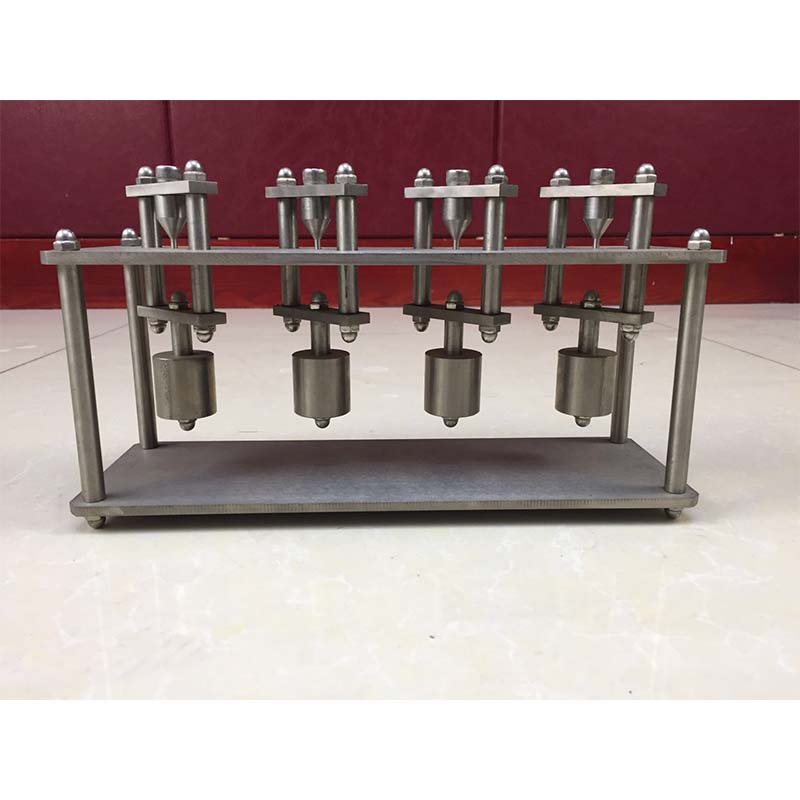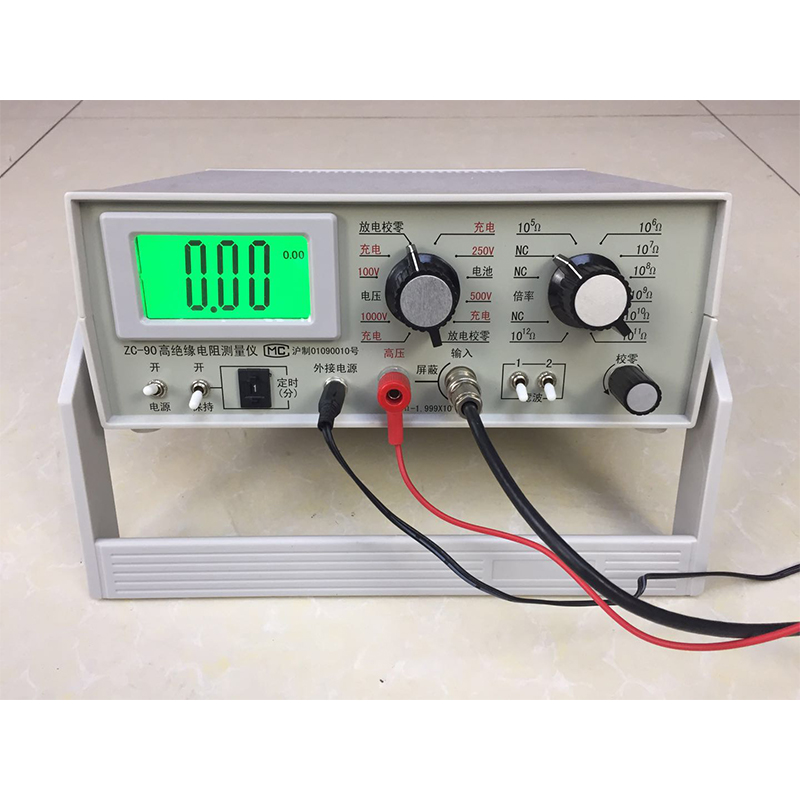High-Precision Wire Repeated Bending Test Machine - Reliable Wire Durability Tester for Industry Applications
- Introduction to wire repeated bending test machine
and its significance - Technical features and advancements
- How manufacturers stand apart
- Global market: Company, manufacturers, and exporters comparison
- Customized solutions and user requirements
- Application scenarios and real-world benefits
- Conclusion emphasizing wire repeated bending test machine's value

(wire repeated bending test machine)
Market Demand and Importance of Wire Repeated Bending Test Machine
In the ever-evolving landscape of materials testing, the wire repeated bending test machine has become an essential instrument for quality assurance in electrical wires, cables, and conductors. With worldwide wire and cable market size surpassing $200 billion as of 2023, the need to guarantee wire durability and safety under mechanical fatigue is more pressing than ever. The wire repeated bending test machine simulates continuous flexural stress on wires, a major factor affecting service life in applications ranging from automotive harnesses to electronic interconnects and construction wiring. Inadequate testing may lead to unexpected failures, resulting in costly downtime or even hazardous conditions. Adoption rates of automated testing equipment have risen by 17% yearly as companies recognize its role in minimizing defects and meeting stringent international standards such as IEC 60245-2 and ASTM D2229.
Due to their critical role in reliability engineering, these machines have attracted attention from buyers globally: Original Equipment Manufacturers, third-party testing labs, and exporters servicing multiple verticals. As mechanical endurance requirements are pushed even further, product innovation and capabilities have expanded. This section outlines the significance of wire repeated bending test equipment in a rapidly growing and quality-driven industry.
Technical Features and Innovations in Wire Bending Fatigue Testers
Modern wire repeated bending test machines incorporate a suite of features designed to meet the evolving challenge of fatigue testing. Traditional mechanical systems have been transformed through the integration of precision servo motors, advanced PLC control, and digital reporting platforms. These technologies offer adjustable bending angles (commonly up to 180°), programmable cycle counts (up to 100,000+), and adaptable test speeds (ranging from 10 to 60 cycles/minute). Automated sensors now monitor wire breakage without operator intervention, optimizing test consistency while reducing human error.
Enhanced customization is also evident in jaw designs that accommodate a broad spectrum of wire gauges (from AWG 8 to AWG 30), varying insulation types (PVC, XLPE, Silicone), and multiple strand configurations (solid core, multi-strand). Safety features, such as dual emergency stops and enclosed moving parts, have become mandatory, reflecting compliance with both CE and RoHS directives for equipment safety and environmental standards. Innovations in user interface—touch screen displays with multilingual support, USB export for test data, and cloud synching—underscore the distinct evolution from solely manual machines to intelligent, networked systems that support Industry 4.0 paradigms.
How Leading Manufacturers Differentiate
The marketplace for wire repeated bending test machines is fiercely competitive, where differentiation hinges on design innovation, reliability, and service offerings. Top manufacturers have moved beyond generic designs to customizable modules and modular upgrades that cater to diverse industry protocols. Material selection for contact jaws, the precision of alignment mechanisms, and the overall build durability distinguish reputable makers.
Leading brands, for instance, boast deviation tolerances under ±0.5% in cyclic motion and durability ratings of over 1 million bends per machine lifespan, underscoring robust mechanism engineering. Service factors—such as extended calibration intervals (often 18–24 months) and global support networks—underscore the value of choosing an industry-leading supplier. Intellectual property, including proprietary algorithms for fatigue-cycle detection and adaptive load correction, is another field where frontrunners solidify their market positions. The presence of comprehensive documentation, ongoing software/API updates, and user training opportunities are further factors buyers evaluate when selecting a long-term business partner.
Comparative Analysis: Wire Repeated Bending Test Machine Company, Manufacturers, and Exporters
Product selection is not solely based on technical characteristics but is informed by a matrix of considerations including manufacturer reputation, export capability, service footprint, and even after-sale support. Below, a comparative table juxtaposes representative companies across major regions:
| Brand / Supplier | Country | Bending Angle Range | Speed Control | Data Output | Export Destinations | Warranty | Lead Time |
|---|---|---|---|---|---|---|---|
| Testek Instruments | Germany | 0-180° | Digital/Programmable | USB/Cloud | 80+ countries | 3 Years | 5-6 Weeks |
| CableCheck Technologies | USA | 0-175° | Stepper Motor | USB | 55+ countries | 2 Years | 3-4 Weeks |
| Jicon Machines | India | 0-165° | Analog + Digital | SD/USB | 40+ countries | 1 Year | 4-5 Weeks |
| Shanghai TestSystem | China | 0-180° | Servo Control | Network / LAN | 100+ countries | 2 Years | 2-3 Weeks |
| Kazumi Exporters | Japan | 0-180° | PLC + Manual Override | USB | 60+ countries | 2 Years | 3-4 Weeks |
The table clearly demonstrates that while European and North American companies often emphasize advanced automation and longer warranties, Asian manufacturers stand out with highly competitive shipping times and reach. The number of export destinations further indicates the global confidence in these suppliers, especially amongst international laboratories and OEMs. Some wire repeated bending test machine exporters provide direct regulatory compliance certification, which can simplify importation and deployment for buyers in regulated markets.
Tailored Solutions and Customization in Modern Machinery
No two wires—and no two test applications—are the same. Global demand for increasingly complex wiring harnesses has accelerated requests for custom-built test systems capable of handling unique geometries, connectors, multiple simultaneous samples, and even hybrid cable-assembly configurations. To meet this, leading manufacturers increasingly offer customizable fixture mounting, application-specific cycle profiles, and software suites that permit stepwise bending, pausing, or multi-axis movements.
For example, automotive testing commonly requires repetitive bending at micro-radii, which is not feasible with standard jaw sets. High-voltage wiring in the energy sector necessitates wide-angle high-torque machines, often exceeding typical force ranges, while medical device cable testing requires sub-millimeter precision with strict patient safety validation. In practice, 60% of all major purchases now include at least one custom mechanical or software adaptation, revealing a trend towards modular, service-oriented machine architectures. This shift allows users to not only meet current test standards but to future-proof testing facilities against evolving regulatory frameworks and new material introductions.
Application Examples and Measurable Benefits
The versatility of wire repeated bending test machines is best illustrated through their widespread adoption across key industries. In the automotive sector, failure rates for wire harnesses subjected to simulated flexural fatigue have been reduced from 3.8% to under 1.1% within 12 months of deploying automated testing procedures based on real-use motion profiles. Electronics manufacturers leveraging programmable testing platforms have reported up to 22% improvement in first-pass yield for device interconnects.
In construction and infrastructure cabling, routine batch acceptance using advanced bending testers ensures compliance with critical safety norms and minimizes liability claims—according to major insurers, cable-related incident claims dropped by 28% in regions adopting stringent fatigue test policies. Aerospace and energy sectors, where cable reliability is mission-critical, rely on robust test protocols to achieve extended operation cycles and reduce ground-fault service calls. A diary of best-practice implementations further suggests that the return on investment (ROI) for automating wire fatigue testing averages 12–15 months, driven by mitigated warranty costs, improved reputational risk management, and better resource allocation.
Conclusion: The Lasting Value of the Wire Repeated Bending Test Machine
The development and deployment of high-end wire repeated bending test machines have decisively transformed quality assurance and product development across all electrically reliant industries. Companies, manufacturers, and exporters collectively strive to deliver reliable, future-ready solutions that benefit from years of technical expertise, ongoing innovation, and unwavering attention to evolving client needs. With global supply chains emphasizing quality, customization, and speed, continued advancements ensure these machines not only meet but exceed regulatory demands and customer expectations.
As innovation accelerates and applications diversify, the competitive edge enjoyed by organizations utilizing state-of-the-art testing infrastructure only grows, marking the wire repeated bending test machine as an indispensable tool for electrical and mechanical reliability far into the foreseeable future.

(wire repeated bending test machine)
FAQS on wire repeated bending test machine
Q: What is a wire repeated bending test machine?
A: A wire repeated bending test machine is a device used to test the flexibility and durability of wires by repeatedly bending them. It helps assess the wire's endurance under mechanical stress. This ensures quality and compliance with industry standards.Q: How do I select a reliable wire repeated bending test machine company?
A: To choose a reliable company, consider their experience, certifications, and customer reviews. Leading wire repeated bending test machine companies often provide after-sales support and custom solutions. Always check their track record in producing high-quality testing equipment.Q: What features should top wire repeated bending test machine manufacturers offer?
A: Top manufacturers should offer robust construction, precise control systems, and user-friendly interfaces. Customization options and compliance with international testing standards are also key. Reliable after-sales service is an important feature to consider.Q: Can wire repeated bending test machine exporters provide international shipping?
A: Yes, most exporters offer international shipping and can handle global logistics. They typically ensure the machines are packed securely and provide all necessary export documentation. Check with the exporter for specific shipping options and costs.Q: Why is it important to buy from reputable wire repeated bending test machine manufacturers?
A: Buying from reputable manufacturers ensures the machine's quality, durability, and measurement accuracy. They also provide warranty and technical support. This reduces long-term operational risks and maintenance costs.-
Why the Conductor Resistance Constant Temperature Measurement Machine Redefines Precision
NewsJun.20,2025
-
Reliable Testing Starts Here: Why the High Insulation Resistance Measuring Instrument Is a Must-Have
NewsJun.20,2025
-
Flexible Cable Flexing Test Equipment: The Precision Standard for Cable Durability and Performance Testing
NewsJun.20,2025
-
Digital Measurement Projector: Precision Visualization for Modern Manufacturing
NewsJun.20,2025
-
Computer Control Electronic Tensile Tester: Precision and Power for the Modern Metal Industry
NewsJun.20,2025
-
Cable Spark Tester: Your Ultimate Insulation Assurance for Wire and Cable Testing
NewsJun.20,2025
 Copyright © 2025 Hebei Fangyuan Instrument & Equipment Co.,Ltd. All Rights Reserved. Sitemap | Privacy Policy
Copyright © 2025 Hebei Fangyuan Instrument & Equipment Co.,Ltd. All Rights Reserved. Sitemap | Privacy Policy
